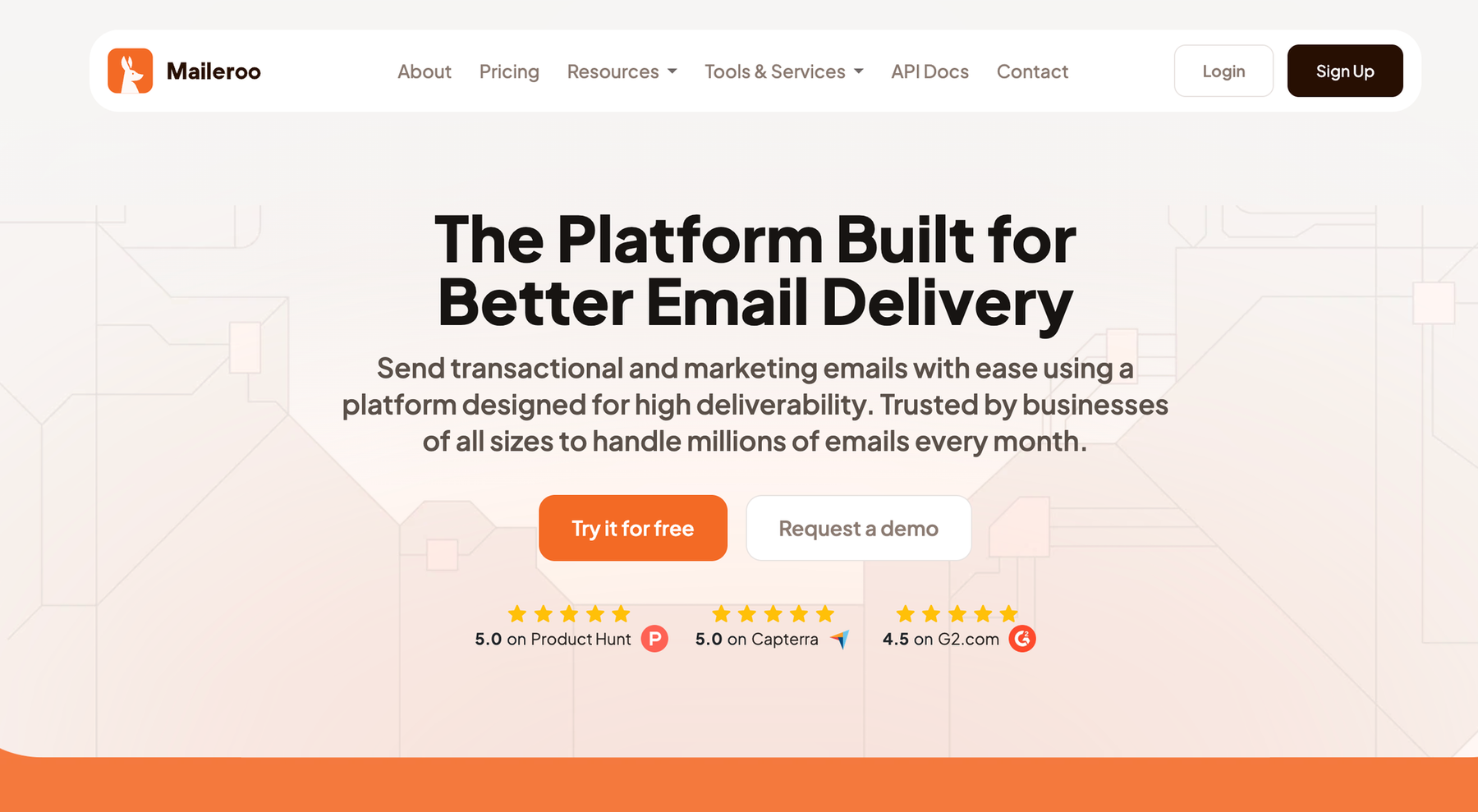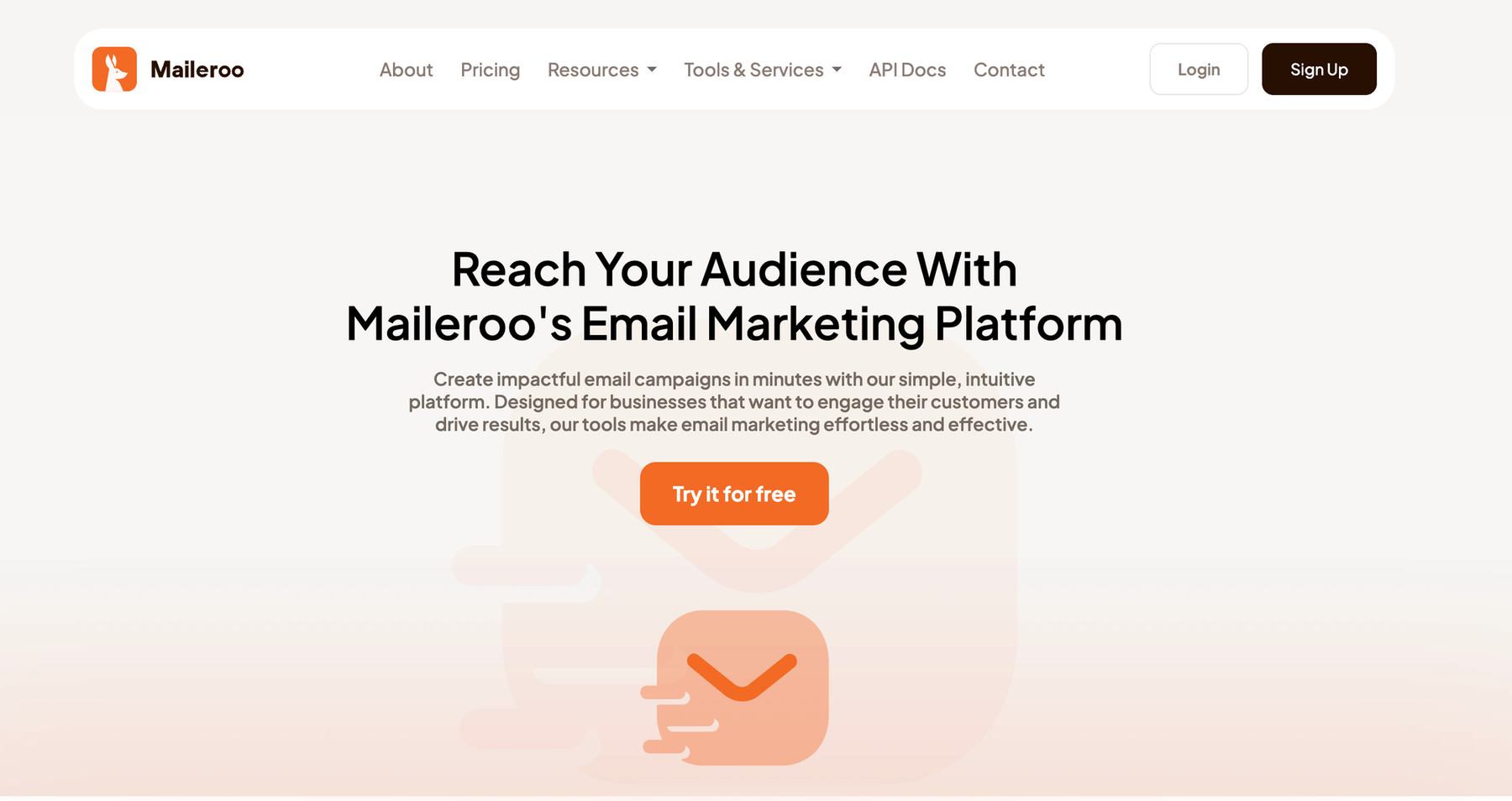MailerSend Kills Its Free Plan: Why Maileroo Beats Their $7 Tier

MailerSend just shut down its free tier, and if you were using it, you're probably thinking about what to do next.
As of October 21, 2025, what used to be MailerSend's free Hobby plan now costs $7/month. For developers and small businesses who've been happily sending transactional emails at no cost, that's a pretty significant shift.
The question is, do you stick with MailerSend and pay up, or is there a better deal out there?
Spoiler: there is. Maileroo not only costs less than MailerSend's new pricing, but it also packs in more features and delivers better performance.
In this breakdown, we'll walk you through what actually changed with MailerSend, how Maileroo stacks up in terms of pricing and features, and why making the switch might be the smartest move for your email needs.
What's Changing at MailerSend?
Let's cut to the chase: MailerSend's free Hobby plan is going away, and there are two key dates you need to know about.
October 21, 2025: If you're signing up fresh, the Hobby plan will cost you $7/month right off the bat. There will be a new free plan.
December 2, 2025: Current free users hit decision time. Either start paying the $7/month or get bumped down to a new "free" plan that's... Well, let's just say it's not really usable for actual projects.
Now, MailerSend is sweetening the deal a bit; the paid Hobby plan bumps your monthly email limit from 3,000 to 5,000 and throws in a couple extra features.
But here's the thing: if you were running on free before, you're now looking at $84/year for something that used to cost nothing.
For solo developers, side projects, and bootstrapped startups, that's not exactly pocket change, especially when there are alternatives that give you more bang for your buck.
The New "Free" Plan: Barely Functional
So what happens if you would rather not pay the $7/month? MailerSend is offering a "Free" plan, but calling it restrictive would be generous. Here's what you actually get:
- 500 emails per month (capped at 100 per day): to put that in perspective, if you're running a small SaaS app, e-commerce store, or even a basic newsletter, you'll blow through the limit in days—maybe hours.
- 1 user, 1 webhook, 1 template, 1 API token translation: no team collaboration, no flexibility for different email types, and forget about having separate tokens for development and production environments.
- 100 API requests per day: This is the real kicker. Even if you're under the email limit, you can only ping MailerSend's API 100 times daily. That's barely enough for basic monitoring or troubleshooting.
- Minimal support: Something breaks? You're mostly on your own.
This "free" plan is really just a sandbox for testing and not something you can actually build on. If you're sending password resets, order confirmations, or any transactional emails for a real project, these limits will stop you in your tracks. It's designed to push you toward the paid plan, not to be a viable long-term option.
Meet Maileroo: The Free Plan That Actually Works
Here's where things get intriguing. While MailerSend is busy eliminating its free tier, Maileroo is doing the opposite, offering a genuinely usable free plan that doesn't feel like a trap.
Let's break down why Maileroo is worth a serious look:
A Free Tier That's Actually Free
Maileroo's free plan isn't a glorified demo. You get real limits that work for real projects—whether you're running a side hustle, managing a small SaaS product, or handling transactional emails for a growing startup. No asterisks, no "gotchas."
No Rug Pulls
Building on top of an email service means trusting it'll be there tomorrow. MailerSend just proved that trust can evaporate overnight. Maileroo gets that suddenly charging for something that was free isn't just annoying—it can derail entire projects. Their free tier isn't going anywhere.
Features That Should Be Standard
Remember those restrictions on MailerSend's new "free" plan? Maileroo doesn't do that. Even on the free tier, you get:
- Multiple API tokens so you can separate dev, staging, and production
- Webhook support for tracking opens, clicks, bounces in real-time
- Unlimited templates because one template is, let's be honest, ridiculous
- Team access so you're not bottlenecked to a single user
- Reasonable daily limits that don't choke your app at the worst possible time
Pricing That Makes Sense When You Grow
Eventually, you might outgrow the free plan—and that's fine. When it happens, Maileroo's paid tiers are straightforward and competitive. No sudden price jumps, no artificial limits designed to squeeze you into upgrading. Just honest pricing that scales with your actual needs.

Making the Switch is Easier Than You Think
Worried about the hassle of migrating? Don't be. Migrating from MailerSend to Maileroo is quite simple, and most users complete the process in under an hour.
Here's the basic rundown:
- Sign up for Maileroo (no credit card, no commitment)
- Swap your API credentials (Maileroo's documentation is clear and developer-friendly)
- Move your templates over (usually just copy-paste)
- Update your webhook endpoints (point them to Maileroo instead)
- Test everything (Maileroo has a sandbox so you can verify before going live)
That's it. For most apps, you're looking at maybe 30-60 minutes of work, and you're done paying for something that used to be free.
The Real Cost of That $7/Month
Sure, $7/month doesn't sound like much.
But let's do the math: that's $84/year for a service that was free six months ago.
Now multiply that if you're running multiple projects. Got three small apps or side projects? That's suddenly $252/year. Five projects? $420/year. For bootstrapped founders and indie developers, that adds up to fast money that could go toward hosting, marketing, or actually building your product.
Here's Maileroo's take: transactional email is infrastructure. It's like hosting or a domain name, something your app needs to function. It shouldn't come with surprise price hikes just when you're starting to gain traction.
If You're Still on MailerSend's Hobby Plan
You've got until December 2, 2025, to decide what to do. Don't let the deadline sneak up on you.
Here's what you should do now:
- Spin up a free Maileroo account and test it with your current setup. Run it in parallel with MailerSend for a week or two. Send some test emails, trigger your webhooks, and check deliverability. You're not committing to anything—you're just seeing how it performs with your actual use case.
- Compare features side-by-side (you might be surprised what you're getting for free). Pull up both dashboards and actually look at what you're getting. You might be surprised to find that Maileroo's free tier includes features MailerSend is now charging for, for example, multiple API tokens, better template management, or more flexible webhook options.
- Run the numbers on what you'd actually pay over the next year or two. $7/month sounds small, but sketch out the real cost: The cost will be $84 this year and $84 next year. Do you have multiple projects or planning to launch more? Factor those in, too. Now compare that to Maileroo's free tier or their paid plans if you need higher limits. The savings add up faster than you'd think.
- Make your move without the pressure of a last-minute scramble. If you wait until late November, you're migrating during the holiday season when support teams are slower and you're probably busy with other things. Do it now while you have breathing room to troubleshoot if needed.
Even if you're not 100% sure, it's worth kicking the tires now while you have time to think it through.

The Bottom Line
This isn't really about $7/month. It's about what happens when a service you've built on top of can flip its pricing model with a few weeks' notice. If they can do it once, what's stopping them from bumping it to $15 next year? Or $25?
Maileroo is offering something that's getting harder to find: a free tier that's actually designed to be used, not just dangled as bait. They get that email infrastructure matters and that small businesses and developers need reliability—not surprise bills.
No bait-and-switch. No forced upgrades. Just solid, dependable transactional email that works whether you're sending 500 emails or 500,000.

